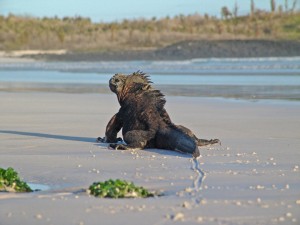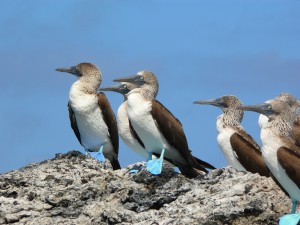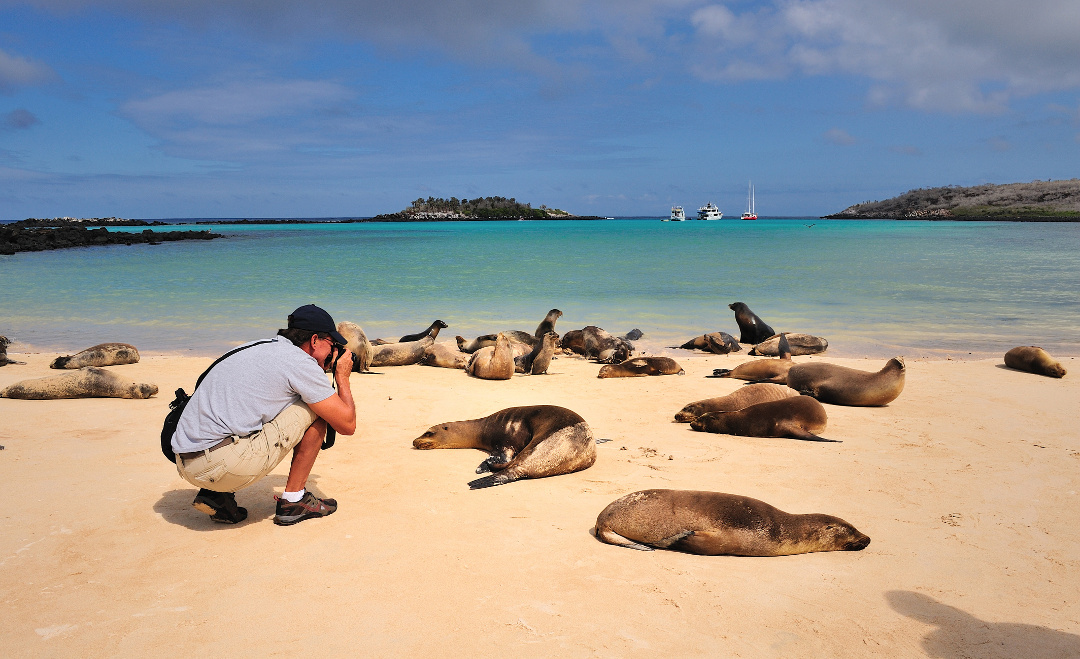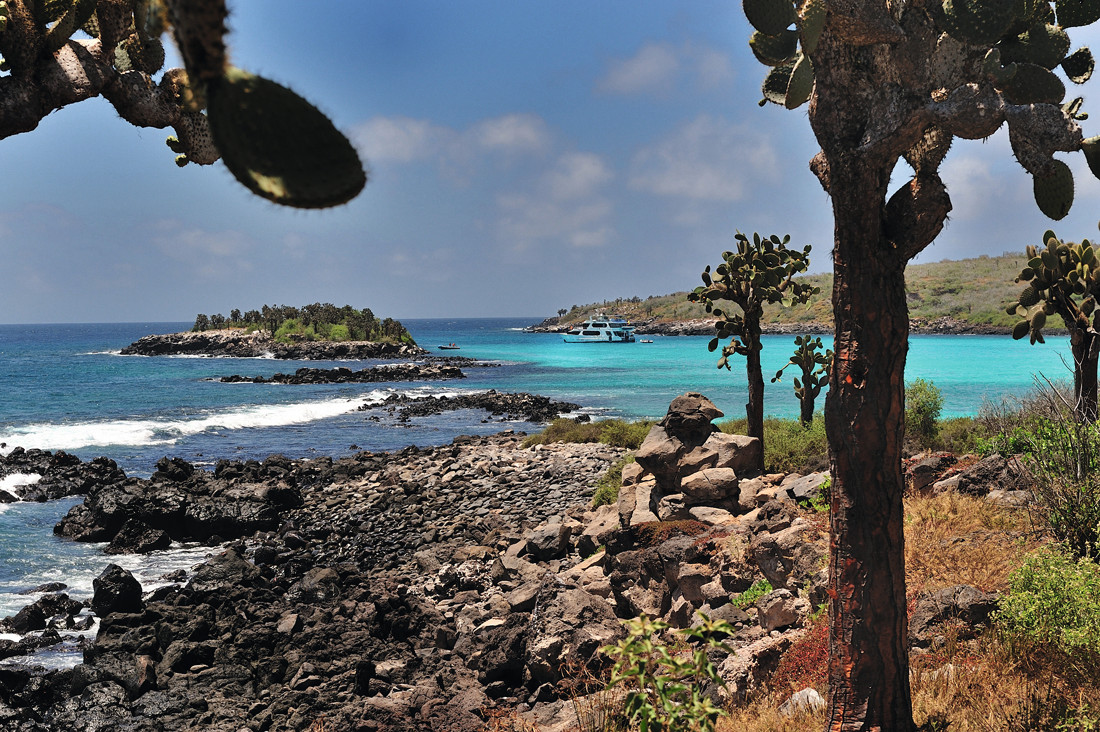Enchanted Island
The Galápagos are such a unique and astonishing world that everybody absolutely must try to visit them at least once. In other words, Galápagos belongs on your “bucket list”. Volcanic eruptions created these large and small islands plus more than one hundred rocks and islets. Because they are 650 miles west of Ecuador’s coast, animal life evolved in a self-contained environment, thus creating a set of species not found anywhere else in the world. In 2007, the United Nations added the Galápagos to the list of Human Heritage Endangered places.
Each island deserves its own coverage. In this issue we focus on Santa Cruz. It’s the second largest with an area of 380 square miles. The Galápagos National Park headquarters and the Charles Darwin Research Station are located on the island. Its most populous city is Puerto Ayora. Santa Cruz is very close to Baltra island and its Seymour airport, which recently was awarded the title of the world’s “First Green Airport.”
INFORMATION
Islas Galápagos – Ecuador
Quito – Baltra:
2 hours by airplane
Guayaquil – Baltra:
1 hour 30 minutes by airplane
Baltra – Isla Santa Cruz:
10 min by boat
Jun – Nov
Fresh and dry
18 °C – 20 °C
Dec – May
warm & rainy
24 °C – 29 °C
 Visitors share Santa Cruz’s beaches and bays with endemic sea lions, turtles and seabirds, in other words, species found only on this island. One of the most attractive spots is Bahía Tortuga (turtle bay), a pristine beach of white coral where black turtles nest. Bahía Tortuga can be accessed by boat or a 1.5 mile hike from Puerto Ayora. Tourists are allowed onto the sea only in a natural lagoon known as “playa mansa” (tame beach). It’s protected from sea currents, so it’s a safe place to snorkel and surf. There are no words to depict the awesome experience of swimming among thousands of colorful fish while observing colonies of seagulls, pelicans and blue-footed boobies. The beach is open from 8 am to 5 pm.
Visitors share Santa Cruz’s beaches and bays with endemic sea lions, turtles and seabirds, in other words, species found only on this island. One of the most attractive spots is Bahía Tortuga (turtle bay), a pristine beach of white coral where black turtles nest. Bahía Tortuga can be accessed by boat or a 1.5 mile hike from Puerto Ayora. Tourists are allowed onto the sea only in a natural lagoon known as “playa mansa” (tame beach). It’s protected from sea currents, so it’s a safe place to snorkel and surf. There are no words to depict the awesome experience of swimming among thousands of colorful fish while observing colonies of seagulls, pelicans and blue-footed boobies. The beach is open from 8 am to 5 pm.
Several other beaches are also recommended. Las Bachas on the northern side of Santa Cruz is another place where marine turtles go to nest. This beach is an ideal spot to watch flamingos and migratory birds. Playa de la Estación (station beach) is great for snorkeling. Turtles, sea lions and marine iguanas often swim close enough to “play” with the tourists. The beach is rocky though, so visitors must be cautious.
Tortuga Bay
The awesome experience of swimming among thousands of fish while observing seagulls, pelicans and blue-footed boobies
 Las Grietas (the crevices) is another attractive space that presents a very special natural phenomenon, a natural pool with two layers of water, sweet on the surface and salt on the bottom. Tourists can watch marine iguanas, sea turtles, sea lions, giant manta rays, hawks, owls and woodpeckers.
Las Grietas (the crevices) is another attractive space that presents a very special natural phenomenon, a natural pool with two layers of water, sweet on the surface and salt on the bottom. Tourists can watch marine iguanas, sea turtles, sea lions, giant manta rays, hawks, owls and woodpeckers.
The highest point in Santa Cruz is Crocker Hill some 2.500 feet above sea level. A guide is strongly recommended because it’s easy to get lost. The climb is worth the effort because the views from the summit are magnificent.
Places to visit
- Playa Bahía Tortuga
- Playa de la Estación
- Playa las Bachas
- Las Grietas
- Cerro Dragón
- Cerro Crocker
Tourists can also hike to Dragon Hill, in the northeast corner of the island, via a 1 mile path that goes through three distinct landscapes.
Santa Cruz is a microcosm of quite different areas. Not only does the vegetation and landscape vary, but animal life varies too. For example, the mangroves are home to various species of iguanas, a multicolored crab, reef sharks and the famous Galápagos turtles.
FAUNA Y FLORA
In Santa Cruz’s beaches and bays visitors share the experiencie with endemic iguanas, frigates and blue-footed boobies
Each island merits a visit, but a tourist must begin somewhere. We believe you can’t go wrong with Santa Cruz as your first stop.


